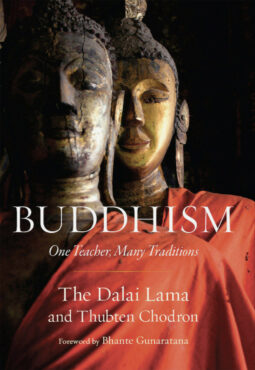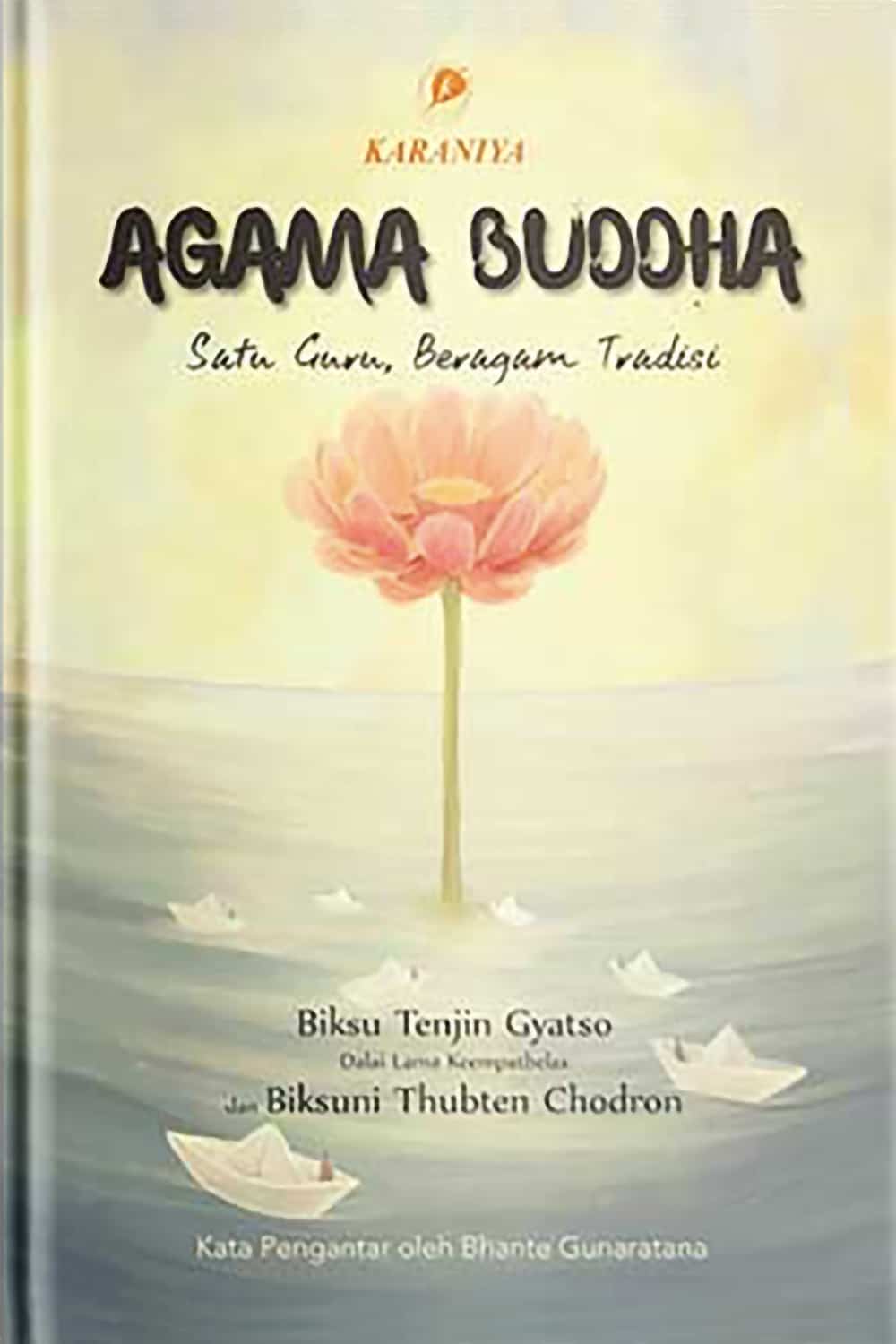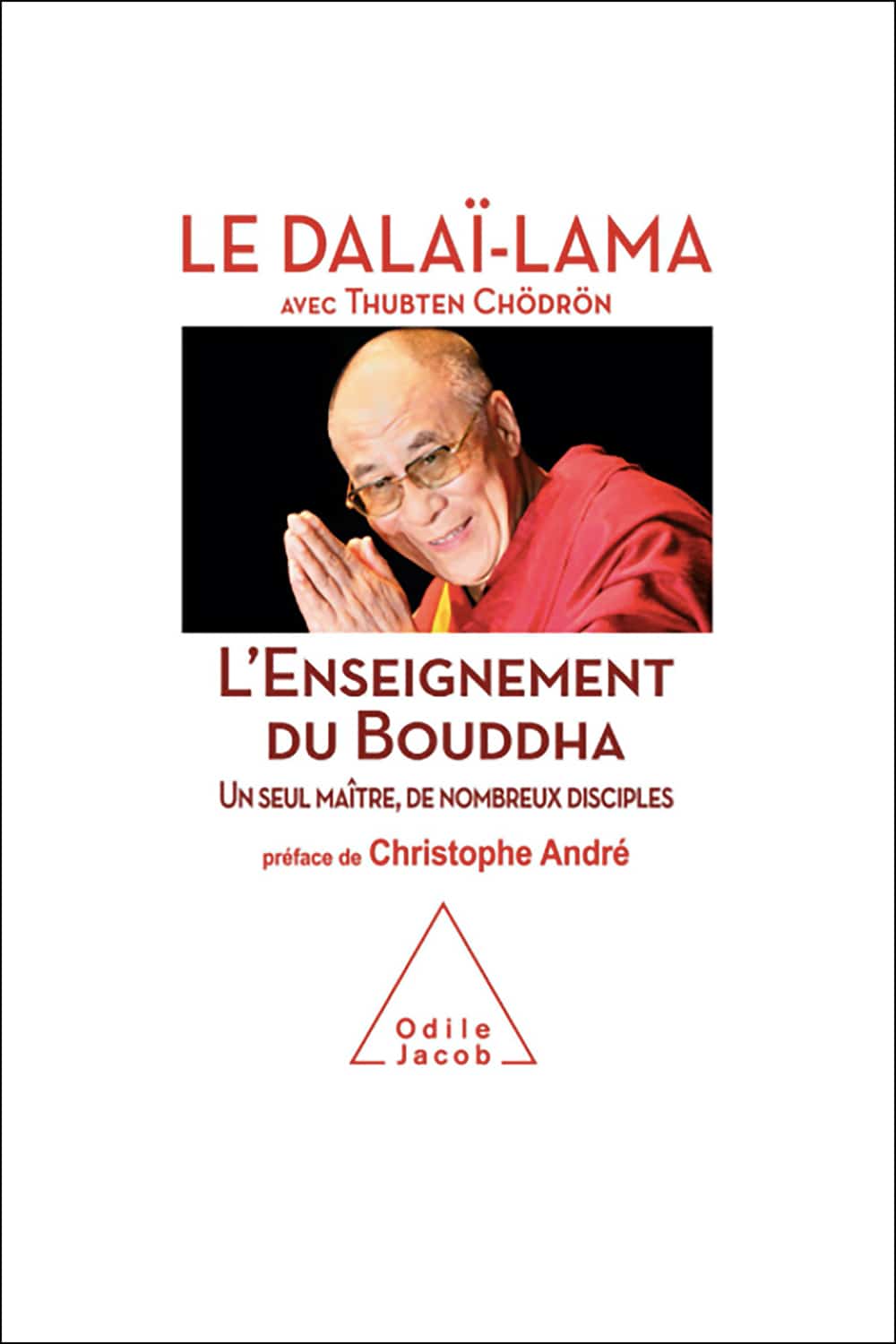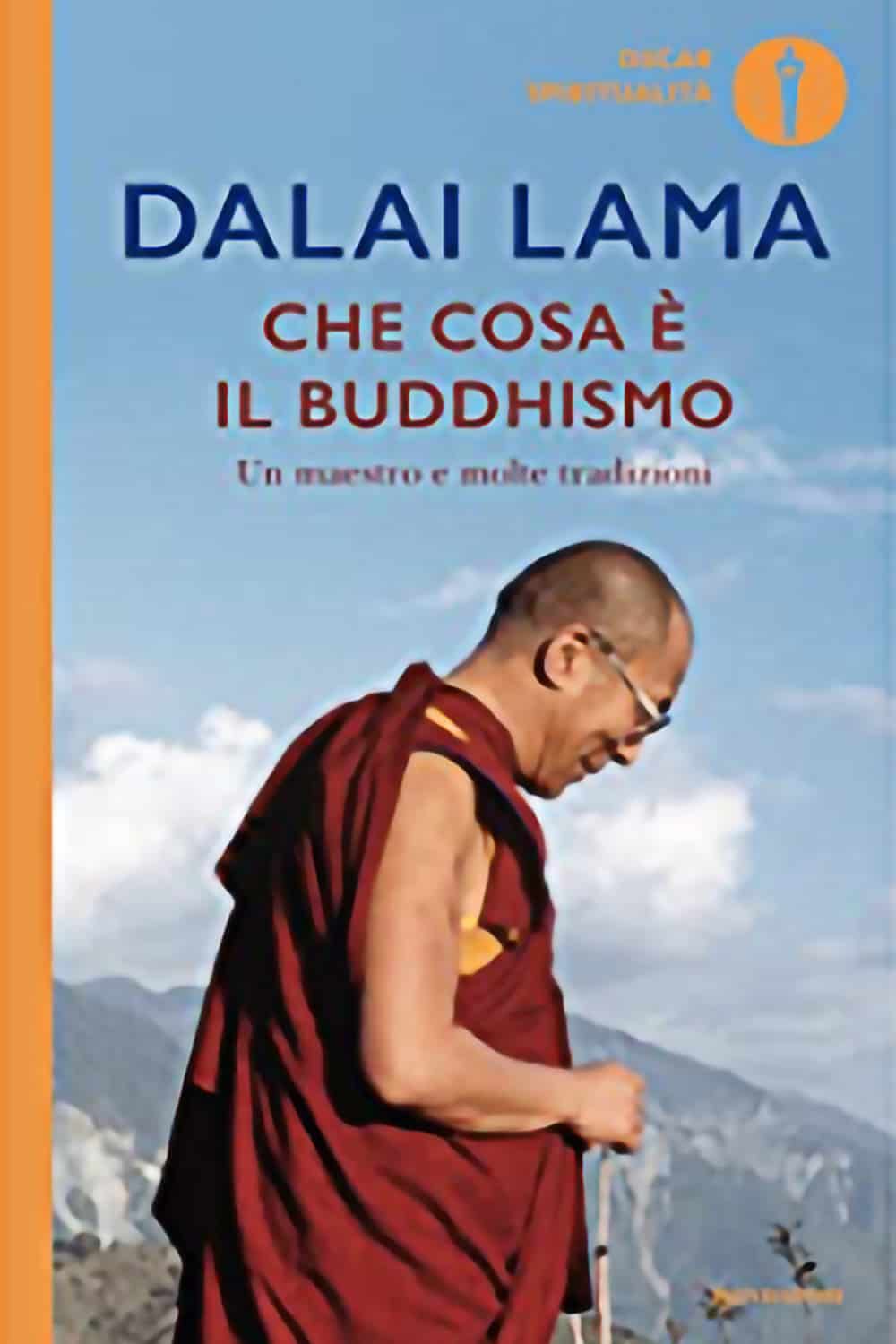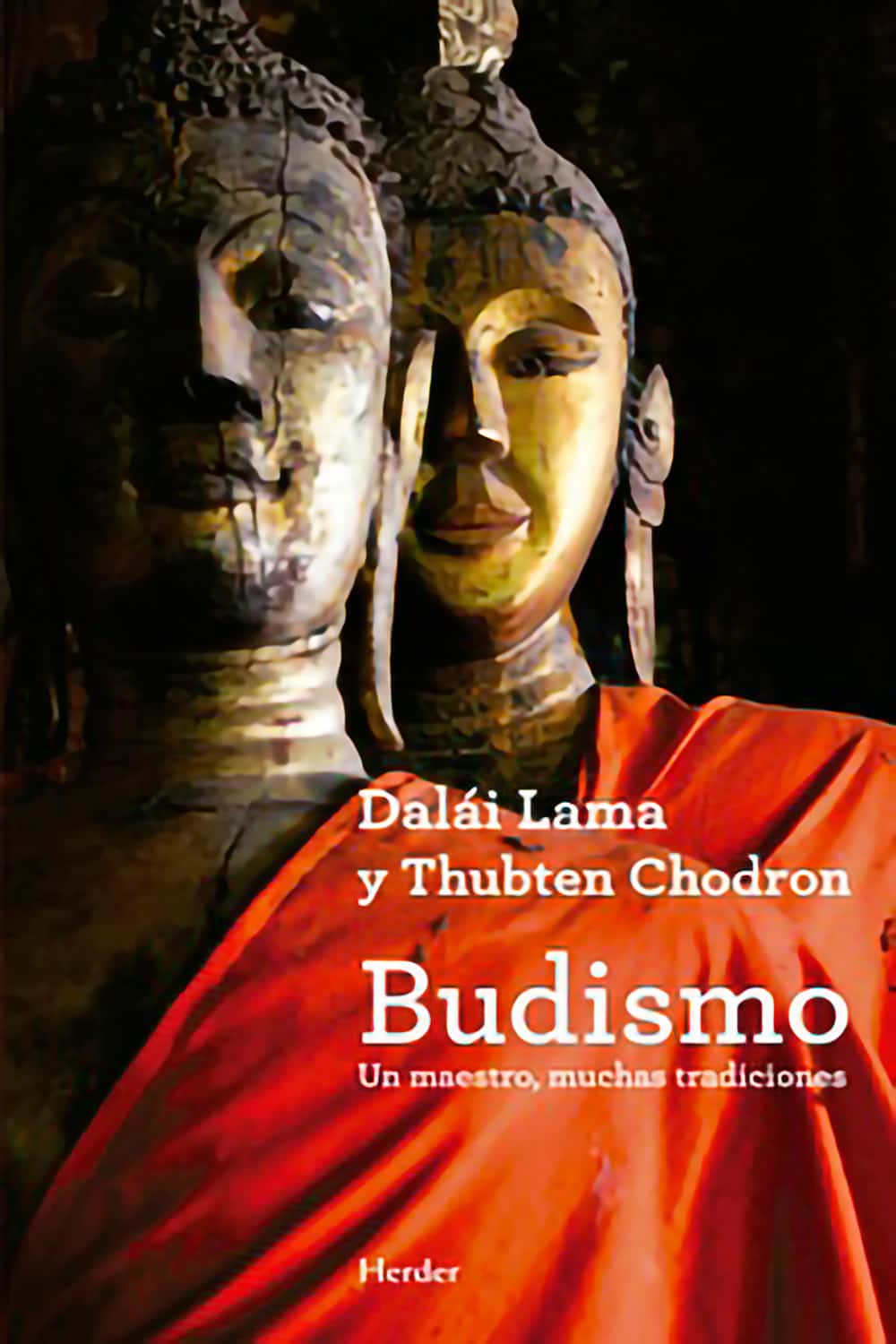Winner of a silver medal in the Foreword Reviews’ 2014 Book Awards
Winner of second place in the 58th New England Book Show
About the book
Buddhism is practiced by hundreds of millions of people worldwide, from Tibetan caves to Tokyo temples to redwood retreats. All these traditions trace their beginnings to the teachings of one man in India 2,500 years ago. These teachings spread worldwide in all directions and into numerous languages, making Buddhism one of the today’s most influential religions.
In this book, His Holiness the Dalai Lama and Venerable Thubten Chodron map out the convergence and divergence of the two major Buddhist movements—the Sanskrit traditions of Tibet and East Asia and the Pāli traditions of Sri Lanka and Southeast Asia.
The authors consider Buddhism’s core practices and tenets, such as the four noble truths, the practice of meditation, the cultivation of love, and the meaning of nirvāṇa, and how the traditions sometimes agree and sometimes differ in their interpretations. The authors’ respectful approach illuminates the many ways that all forms of Buddhism, amid their rich diversity, share a common heritage and common goals.
The story behind the book
Preview
Foreword by Bhante Henepola Gunaratana
When we investigate Buddhism’s major traditions, as the present book does, we can see that they have contributed to the world a rich tapestry of cultural, social, and spiritual knowledge. That knowledge offers deep insights into psychology, philosophy, and mental health. The broad recognition of this has fed today’s global awakening to the importance of meditation. Read more …
Preface by Venerable Thubten Chodron
A book showing the commonalities and unique points of various Buddhist traditions could have been approached from any number of perspectives. As Buddhists, we all bow to the Buddha, make offerings, and confess our ethical downfalls. We engage in meditation, chanting, study and recitation of sūtras, and listening to teachings. All of our communities have temples, monasteries, hermitages, and centers. Explaining the similarities and differences among these external activities would certainly aid our mutual understanding. Read more …
Wisdom Academy Online Course
Venerable Chodron began a series of live teachings from Buddhism: One Teacher, Many Traditions at Sravasti Abbey in 2014. Wisdom Academy carefully edited videos from those teachings and created a well-structured, step-by-step online study program. Unedited videos of the full series are also available.
Introductory talks
- Celebrating the book’s publication
- Reading at Auntie’s Bookstore, Spokane
In-depth talks
- “Refuge and the Three Kinds of Interdependence (Прибежище и три вида взаимозависимости),” teaching from Chapter 2, given at the request of Friends of Sravasti
- Abbey Russia
- “The Buddha’s life and teachings,” Dharma Friendship Foundation, Seattle
- “Practicing in harmony,” Vimalakirti Buddhist Center, Singapore
- “Understanding Buddhist traditions,” Jewel Heart Center, Cleveland
- “Mutual appreciation between traditions,” Vihara Borobodur Medan, Indonesia
- “Common heritage, common goals,” Ekayana Buddhist Center, Jakarta, Indonesia
- “Many traditions, one teacher,” Ekayana Buddhist Center, Jakarta, Indonesia
- “Teachings on the “Ethical Conduct,” in conjunction with the 2015 Exploring Monastic Life program
- “The four immeasurables in the Pali and Sanskrit traditions,” Poh Ming Tse Temple, Singapore, with Bhante Dhammaratana
Interviews
- Watch an interview by Spokane Faith and Values
- Read an interview by Mandala Magazine
Excerpt: “Origin and spread of the Buddha’s doctrine”
Not all people think alike. They have different needs, interests, and dispositions in almost every area of life, including religion. As a skillful teacher, the Buddha gave various teachings to correspond to the varieties of sentient beings. We’re going to look at the development of the two major Buddhist traditions containing these teachings, the Pāli and Sanskrit traditions. But first, we begin with the life story of Śākyamuni Buddha. Read more …
Translations
- Available in Bahasa Indonesia, Traditional Chinese, French, Italian, Polish, Korean, Russian, Spanish, Vietnamese (freely offered PDF), and Thai
Publication reviews
- Tricycle Magazine, Summer 2015 issue
- Eastern Horizon, January 2015 issue
More reviews
Post your review on Amazon
Reading this book we begin to sense how huge and diverse the Buddhist family is. A common bond which connects all Buddhist practitioners is their being messengers of peace. In 15 chapters from the opening one on “Origin and Spread of the Buddha’s Doctrine” to the closing one on “Tantra,” His Holiness the Dalai Lama and Thubten Chodron explain some of the more complex teachings on selflessness, emptiness, dependent arising, and the higher training in ethical conduct and wisdom. We appreciated the clear and cogent explanations of the four immeasurables (love, compassion, joy, and equanimity). After finishing “Buddhism: One Teacher, Many Traditions” you will have a deeper appreciation of this path.
Originating from a common source in the teachings of the historical Buddha, the southern Theravada tradition, based on texts in Pali, and the northern traditions of Tibet and East Asia, based largely on texts originally in Sanskrit, all developed their own unique systems of doctrine and practice. These are impressive in their philosophical insights into the nature of reality and in their understanding of the deep potentials of the human mind. In this book His Holiness the Dalai Lama and the American bhikṣuṇī Thubten Chodron jointly explore the commonalities and differences among these Buddhist traditions, doing so with exceptional precision. This book will reward those who study it carefully with a deep and wide understanding of the way these traditions have mapped their respective visions of the path to enlightenment.
His Holiness and Thubten Chodron have put a huge amount of care and attention into compellingly pointing out, comparing, and analyzing in detail the various commonalities, synergies, and divergences of the major historical Dharma streams. This book gives scholars and practitioners alike an authoritative, wise, and invaluable modern perspective and resource for understanding not only where the various traditions within Buddhism originated, what they have in common, and where they differ in substance or tone, especially regarding liberation—an analysis never before done in this way—but also how these fundamental teachings of the Buddha might be skillfully and rightly understood and applied in the present era to, in their words, “serve humanity” and “benefit sentient beings,” both within the Buddhist community, and beyond.
Now that people around the world have unprecedented access to all traditions of Buddhism, a growing number of Buddhists find themselves drawn to theories and practices from different traditions. This makes this book especially valuable, for it presents clear and accurate comparisons between the Pāli-based and Sanskrit-based schools of Buddhism, showing the common ground and significant differences in their interpretations of key themes of the Buddhist path to liberation. I highly recommend this volume for everyone seeking a more global understanding of the many traditions of Buddhism, all inspired by the one Teacher, Buddha Shakyamuni.

